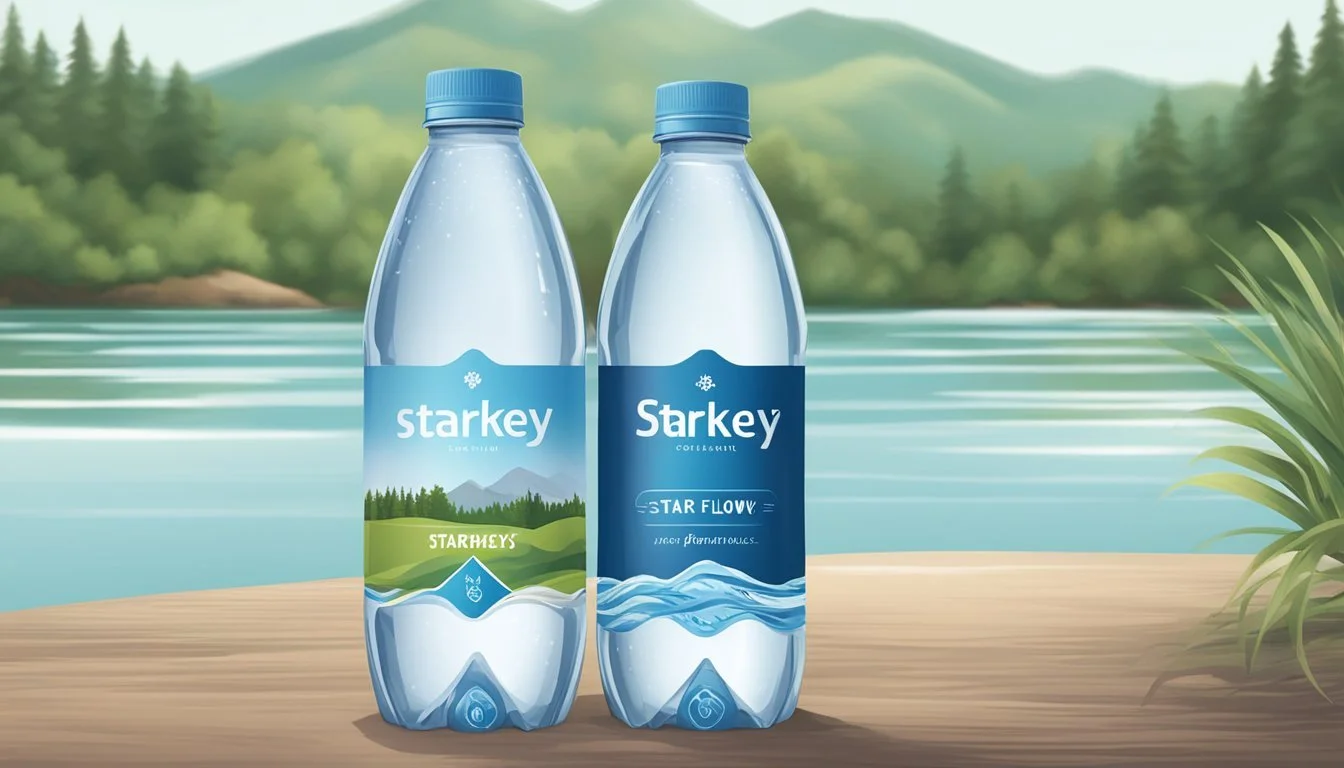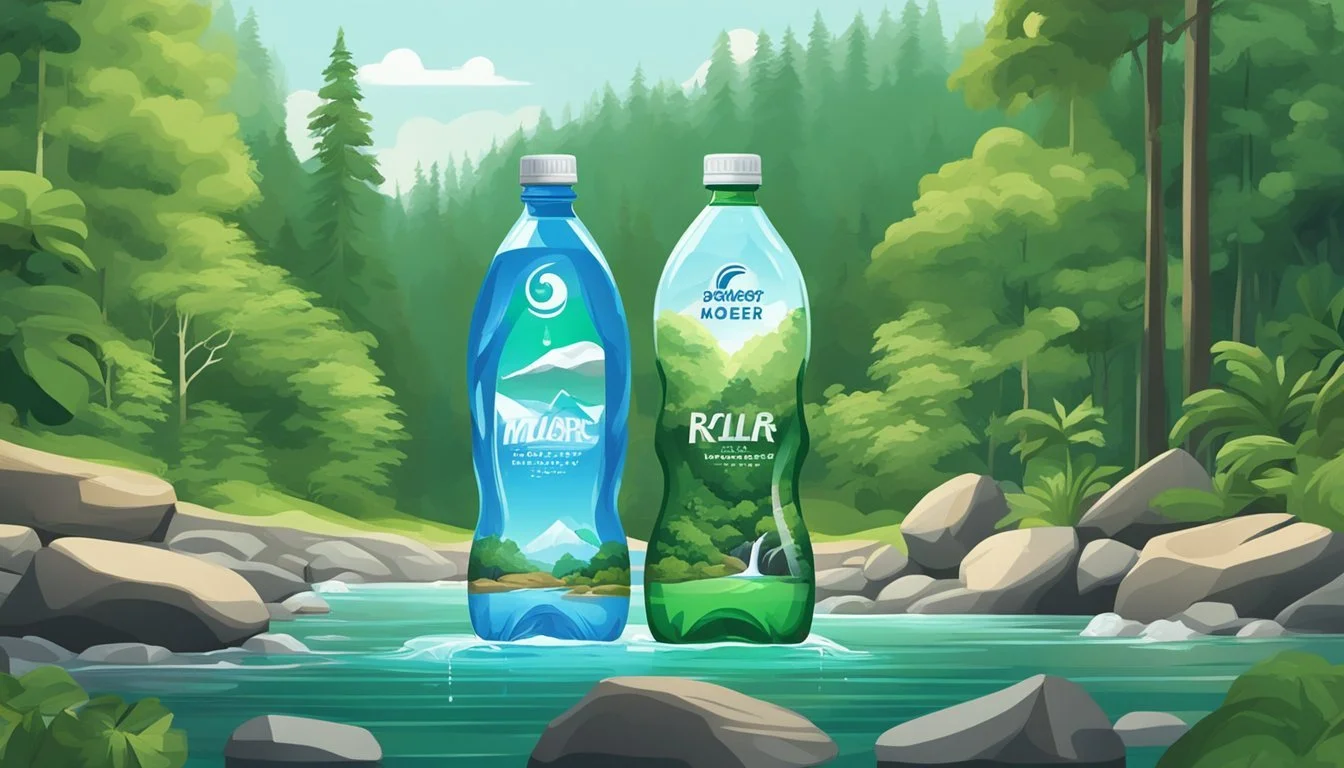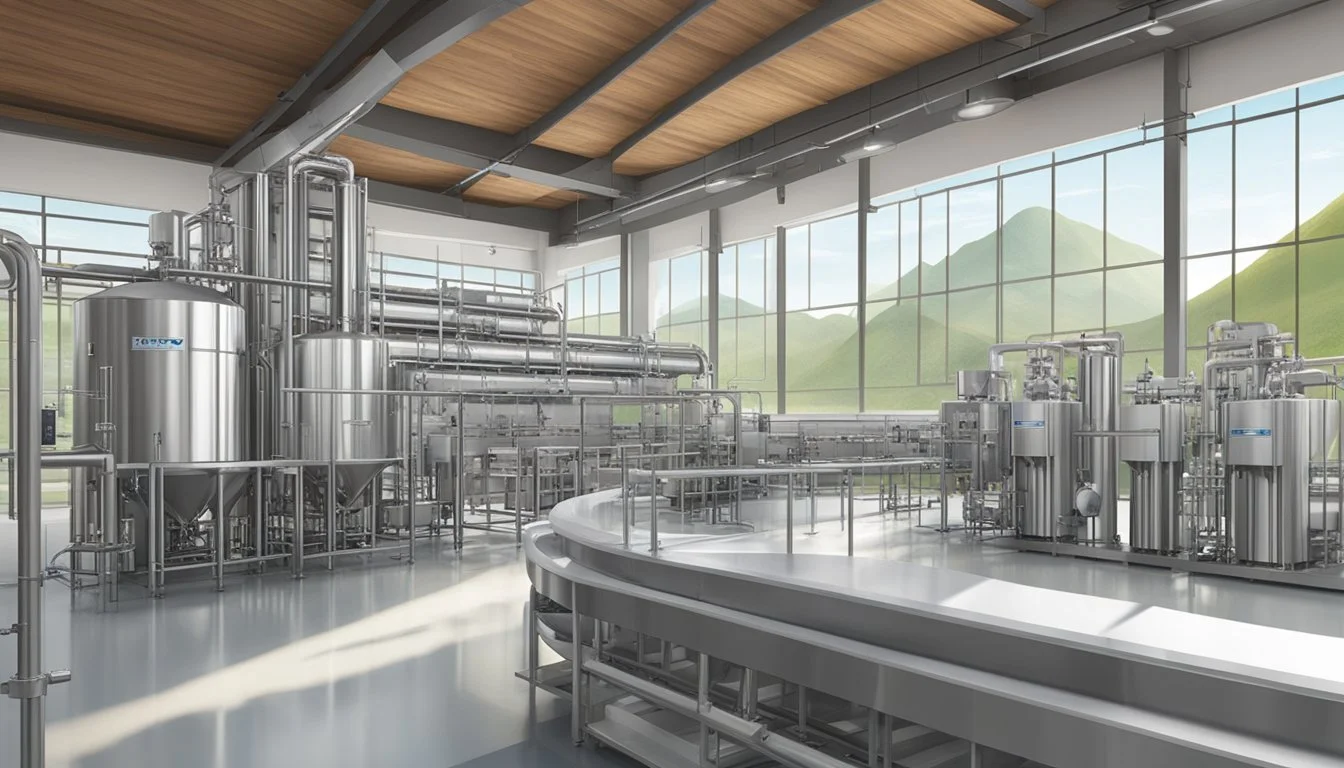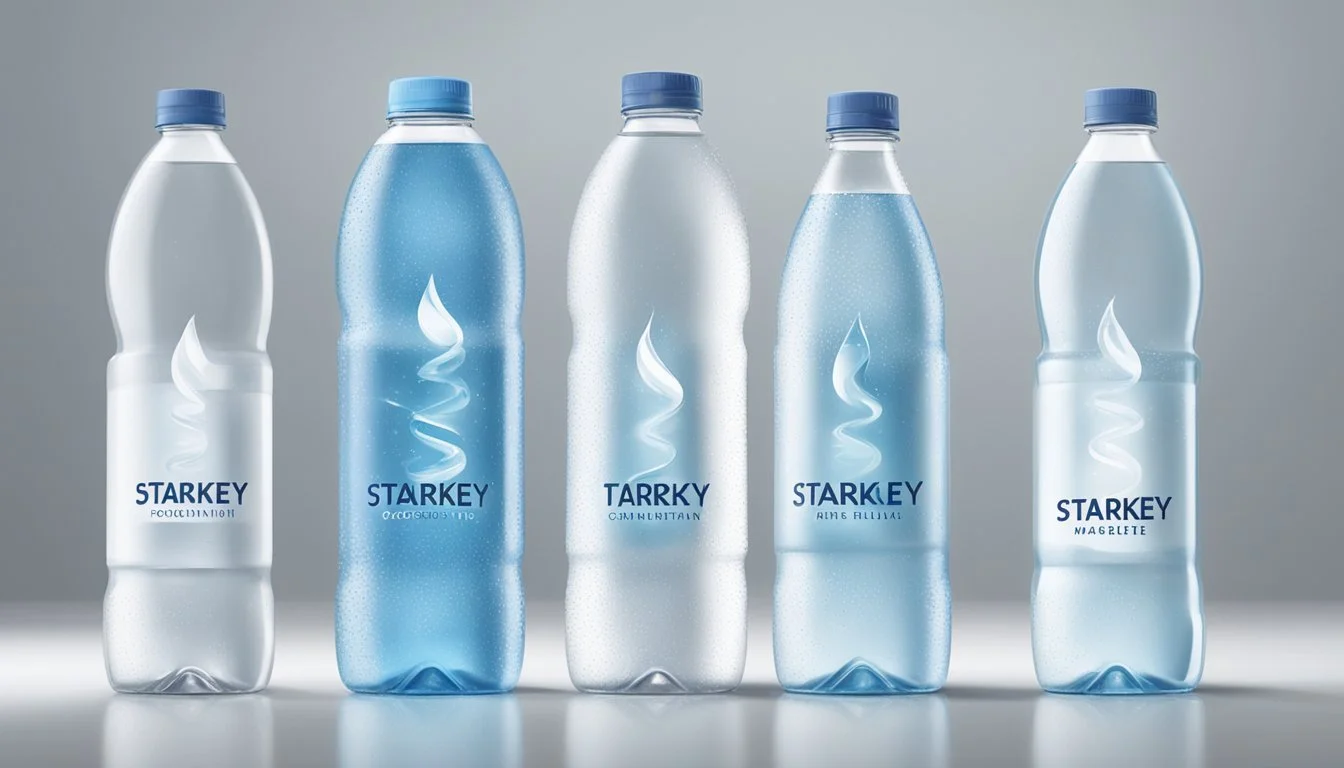Starkey vs. Flow
Bottled Water Quality Comparison
When it comes to choosing the best bottled water, Starkey and Flow have become top contenders in the market. Each brand offers unique qualities that appeal to different taste preferences and hydration needs. Starkey water is known for its smooth taste and natural mineral content, sourced from geothermal springs, which adds a distinctive character to its profil
Flow, on the other hand, emphasizes sustainability with its eco-friendly packaging and natural alkaline spring water. Flow’s crisp, clean taste and commitment to reducing environmental impact make it a popular choice among eco-conscious consumers. Its milk box-style design is not only practical but also visually appealing, setting it apart from traditional plastic bottled water brands.
Choosing between Starkey and Flow ultimately comes down to personal preference and priorities. Those who value a rich mineral taste might lean towards Starkey, while those prioritizing sustainability and a refreshing, neutral flavor may find Flow more appealing. This comparison will help you make an informed decision about which bottled water better suits your lifestyle.
Bottled Water Overview
Bottled water comes in various forms, each offering unique qualities and brand promises. Brands like Starkey and Flow provide choices for consumers looking for pure and refreshing hydration.
Health benefits are a significant selling point for many bottled water brands. Essentia and Core Hydration emphasize enhanced pH levels and electrolyte content, catering to those seeking optimal hydration and wellness.
Evian and Fiji are known for their natural spring sources and mineral content, claiming to offer a taste reflecting their pristine origins. Voss and Icelandic Glacial highlight their artesian and glacial sources, respectively, which contribute to their unique taste profiles.
Brands like Aquafina and Dasani, both products of large corporations (PepsiCo and Coca-Cola), focus on purified water, ensuring consistent quality and taste through rigorous filtration processes.
Nestlé offers multiple bottled water brands, with Pure Life being one of the more recognizable names. Consumers often look for the reliability that a large company like Nestlé can provide.
Perrier and Poland Spring cater to those who enjoy sparkling water options, providing a crisp and effervescent experience. Acqua Panna from Italy brings a touch of European luxury to the bottled water market.
With bottled water being a widely consumed product, companies continue to innovate and differentiate their offerings to meet diverse consumer preferences and needs.
Comparative Analysis
Choosing between Starkey and Flow bottled water involves examining their source, taste, health benefits, and safety features. This section provides a detailed look at each aspect to help readers make an informed decision.
Source and Origin
Starkey water is sourced from an ancient geothermal spring located in Idaho. The water naturally flows through volcanic rock, enriching it with minerals. It is bottled at the source to maintain its purity.
Flow, on the other hand, is sourced from natural springs in North America, often described as pristine and untouched. It boasts a sustainable packaging process, with an emphasis on environmental impact.
The difference in origin significantly influences the mineral content and taste profile of both brands.
Taste and Flavor Profile
Starkey water is known for its slightly mineral-rich flavor, which stems from its journey through volcanic rock. It offers a clean, crisp taste with notable mineral undertones.
Flow, in contrast, provides a softer, more neutral flavor. Its taste profile is designed to appeal to those who prefer a subtler water experience.
Both brands cater to specific preferences, with Starkey appealing to those who enjoy a distinct mineral flavor, while Flow satisfies those seeking a milder taste.
Health Implications
Starkey water contains natural electrolytes, which include potassium, calcium, and magnesium. These minerals contribute to the overall health benefits, aiding in hydration and electrolyte balance.
Flow also contains essential minerals and boasts a naturally alkaline pH balance. The alkaline nature can assist with balancing the body's pH levels. Both waters cater to health-conscious consumers, but with varying emphases on electrolytes and pH levels.
Purity and Safety
Starkey undergoes rigorous safety testing to ensure it meets FDA and EPA standards. This includes tests for lead, heavy metals, and other contaminants. The water is bottled at the source, guaranteeing minimal contamination.
Flow too adheres to strict safety standards, utilizing advanced purification processes such as reverse osmosis and ultraviolet light treatment. This ensures the water is free from harmful impurities, providing a safe drinking experience.
Both brands prioritize safety, but their purification techniques and testing methods can differ, influencing consumer preference.
Water Quality and Contents
When comparing Starkey and Flow, it is essential to examine the quality and contents of each type of water. Factors such as mineralization, hydration efficiency, and purification methods all play critical roles in determining which brand stands out.
Mineralization
Starkey water is known for its mineral-rich profile, offering a unique taste and potential health benefits. It contains sodium, calcium, and magnesium, which are essential electrolytes. This mineral content adds a distinct flavor that many find refreshing.
Flow water, on the other hand, is praised for its smoothness and mineral balance. It has a pH level of approximately 8.1, making it an alkaline water. This alkalinity is believed to aid in balancing the body's pH. Flow's water source naturally infuses it with minerals, creating a mild and clean taste.
Hydration Efficiency
Hydration efficiency is a vital consideration, especially for those with active lifestyles. Starkey's higher mineral content, especially its electrolytes, supports rapid hydration. Electrolytes help maintain fluid balance and muscle function, crucial for athletes and those engaged in physical activities.
Flow's alkaline nature might contribute to better hydration, as some suggest that alkaline water is absorbed more quickly by the body. Its balanced mineral profile also aids in rehydration, making it a solid choice for everyday consumption.
Purification Methods
Starkey utilizes a natural artesian source, which means the water is naturally filtered through layers of rock, providing inherent purity. This process preserves the natural minerals and electrolytes without the need for additional purification steps.
Flow water undergoes a rigorous filtration process, ensuring its purity. The water is subjected to a multi-stage purification method, including reverse osmosis and UV light treatment. This removes impurities while retaining beneficial minerals, resulting in clean, fresh-tasting water.
Starkey vs. Flow, at their cores, offer distinct advantages through their unique mineral profiles, hydration benefits, and purification methods. Each brand caters to different preferences, making personal priorities the key determinant in this comparison.
Environmental Impact
Both Starkey and Flow bottled waters claim to prioritize environmental sustainability, but their approaches differ.
Starkey:
Owned by Whole Foods Market.
Sold in plastic bottles, which contribute to plastic pollution.
Despite marketing efforts, plastic remains a significant issue regarding waste management and recycling inefficiency.
Flow:
Comes in boxed water packaging, using renewable resources.
The package is recyclable and primarily made from paper, reducing dependency on plastics and minimizing environmentally harmful impacts.
Flow emphasizes reducing carbon footprints through sustainable sourcing and production practices.
Comparison:
Plastic Bottles: Starkey’s plastic bottles often end up in landfills, posing threats to marine life and contributing to long-term ecological damage.
Boxed Packaging: Flow’s use of paper-based cartons positions it as a more eco-friendly alternative, as paper decomposes faster and is easier to recycle compared to plastic.
Water Sources:
Starkey offers spring water, sourced from a geothermal spring, highlighting the natural purity aspect.
Flow also provides naturally alkaline spring water, sourced sustainably to ensure minimal environmental disruption.
Alternatives:
Increasing consumer interest in tap water and filtered water options are driven by concerns over bottled water's environmental footprint.
Many opt for reusable bottles and home filtering systems to avoid single-use plastic and the associated environmental costs.
Environmental Metrics:
Flow's efforts in reducing plastic pollution give it an edge in terms of sustainability.
Supporting products like Flow may encourage broader adoption of sustainable packaging in the bottled water industry.
By focusing on these approaches, both brands aim to address the increasing demand for eco-friendly and sustainable solutions in the water sector.
Consumer Experience
Consumers often choose between Starkey and Flow based on how they perceive the packaging, branding, and price points of these bottled waters. These factors significantly affect their purchasing decisions and perceptions of value.
Packaging and Branding
Starkey and Flow offer distinctive packaging that appeals to different consumer preferences. Starkey water is known for its elegant glass bottle, which conveys a premium and environmentally-friendly image. Glass bottles are perceived to offer a purer taste and retain water quality better than plastic.
Flow, on the other hand, uses a unique Tetra Pak carton. This packaging is not only eco-friendly but also visually appealing with its minimalist design. The carton design emphasizes sustainability, which resonates with environmentally-conscious consumers.
Comparing the branding, Starkey positions itself as a luxurious and pure choice, while Flow emphasizes sustainability and innovation. Each brand's approach to packaging and branding aligns with their broader market strategy and target audience.
Price Comparison
Price plays a significant role in consumer decision-making. Starkey typically falls at the higher end of the price spectrum. Its glass bottle and premium branding contribute to its higher cost. Consumers who prioritize quality and luxury are more likely to choose Starkey, despite the steeper price.
Flow is positioned as a more cost-effective option compared to Starkey. Its use of cartons instead of glass bottles allows for lower production costs, which translates to a more affordable price for consumers. Coupled with its eco-friendly appeal, Flow offers a balance of affordability and sustainability.
When compared with other popular brands like Evian, Fiji, Smartwater, Dasani, and Aquafina, Starkey and Flow distinguish themselves through their unique packaging and price points. Customers must weigh the cost-effectiveness against their personal values and preferences to determine which brand aligns better with their needs.
Industry Insights
The bottled water industry has seen substantial growth, becoming one of the fastest-growing sectors globally. According to market trends, sales increased significantly between 2010 and 2020.
The International Bottled Water Association (IBWA) plays a crucial role in setting standards and ensuring quality. They advocate for responsible practices and regulatory oversight, benefiting both consumers and companies.
Investigative journalists have occasionally exposed incidents of corporate malfeasance within the industry. These reports highlight concerns over business practices and raise questions about transparency and accountability.
Consumer Reports often evaluate bottled water brands based on purity, taste, and contaminant levels. These ratings influence buying decisions and can shape market dynamics.
Subprime lending scandals have indirectly impacted consumer perception of corporate ethics. Similar concerns exist within the bottled water sector when standards are compromised.
Signal, an encrypted messaging app, is sometimes used by whistleblowers to share sensitive information. This tool has facilitated the exposure of potential wrongdoing within the industry.
Dangerous tires and other unrelated scandals have parallels in how industries handle crises. Lessons from these situations provide insights into managing public relations and maintaining consumer trust.
Marketing strategies often emphasize health benefits and purity. Starkey and Flow, as premium brands, capitalize on these narratives to attract health-conscious consumers.
Email campaigns are a crucial aspect of marketing, directly reaching potential buyers. These campaigns are tailored to educate consumers and promote brand loyalty.
The evolving landscape of the bottled water market demands continuous adaptation. Companies must stay ahead of trends and uphold ethical standards to maintain a competitive edge.
Conclusion
Starkey and Flow both offer high-quality bottled water options, each appealing to different preferences. Starkey boasts a mineral-rich profile, providing a refreshing taste favored by those who enjoy a distinctive, slightly savory mineral flavor.
Flow, known for its crisp and neutral taste, attracts consumers seeking clean, pure hydration. Its eco-friendly packaging is also a plus for environmentally conscious buyers.
Choosing the best bottled water between the two depends on what qualities are most important to the consumer. If mineral content and distinct taste are priorities, Starkey is a strong contender. Conversely, if neutral taste and sustainable packaging are desired, Flow stands out.
In the end, both brands offer reliable hydration, allowing consumers to enjoy premium bottled water tailored to their needs and values.
More About Starkey
Icelandic Glacial vs Starkey: Which Bottled Water is Better?
Mountain Valley Spring Water vs Starkey: Which Bottled Water is Better?
Starkey vs Kirkland Signature: Which Bottled Water is Better?
Starkey vs Richard's Rainwater: Which Bottled Water is Better?
Starkey vs Whole Foods Italian Still Mineral water: Which Bottled Water is Better?






